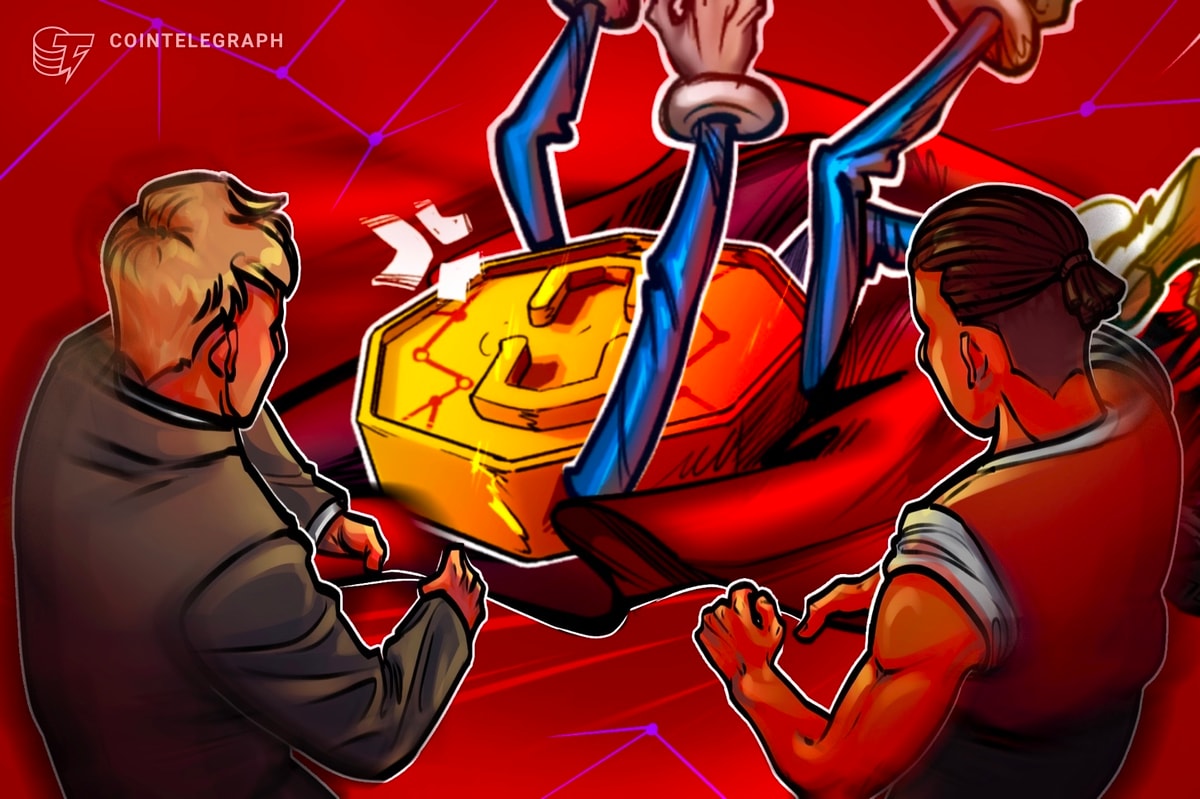The Blockchain has become much more than a simple piece of technology. It has become a symbol for freedom, transparency and fairness. With this being said, it’s no wonder we see projects leveraging Blockchain tech as a “one-size-fits-all” tool to solve all sorts of problems, many of which could not be further from the original purpose of the Blockchain.
Nowadays, the words “Blockchain technology” are thrown around alot and sometimes the use of the technology itself is unnecessary. Tim Swanson, Director of Market Research at R3CEV has even coined the term "chain washing" to describe companies/startups that are using or trying to use Blockchain technology in certain areas when in fact, they could be using more advanced technology for the purpose at hand.
This becomes especially evident when it comes to file and data storage. Although the Bitcoin Blockchain is basically a decentralized database for transactions, accounts and balances, keeping that information on a decentralized ledger is already proving to be a challenge due to capacity issues. Nevertheless, several projects and companies insist on looking at Blockchain-based solutions for storage and, while there are clear cases of misguided enthusiasm when it comes to the use of Blockchain technology, there are some projects out there that are worth taking a look at.
Blockchain Technology as an Incentive Layer
When it comes to a mutualistic relation between Decentralized Ledger Technology (DLT) and data storage, the most common use case for the Blockchain is as an incentive layer. This means that data isn’t stored on the Blockchain itself, but the network at hand is able to leverage the Blockchain as a ledger for automatic payments and/or for value exchange, enabling users to pay for storage or access to files.
In this case, the advantages for using the Blockchain over any other technology are clear. These include faster settling times, lower transaction fees (which enable microtransactions), higher privacy and the ability for transparent and immutable record keeping. While the Blockchain isn’t being used for data storage, it is providing the foundation on which the decentralized network is built, allowing it to run with no central authority whatsoever.
There are several projects leveraging the Blockchain in such a way. Storj, one of the first and most successful decentralized storage networks on the cryptosphere, comes to mind. The project started out using a Bitcoin-based asset but later moved to an ERC20 token on the Ethereum Blockchain. This token, the Storj Coin (SCJX), is used by clients to pay for storage and acts as an incentive for nodes that keep part of the client’s files. These files have been previously shredded, encrypted, and distributed to multiple nodes in order to ensure their safety and availability.
Another popular example is Filecoin, a project developed by Protocol Labs, the creators of the InterPlanetary File System (IPFS). In case you aren’t familiar with IPFS, it is an alternative p2p hypermedia protocol that allows files to be stored in a permanent and decentralized fashion. This provides historic versioning for files, removes duplicates and even allows users to save on bandwidth since files are downloaded from multiple computers and not from a single server.
While IPFS provides a basis for the storage of files, Protocol Labs took this one step further with the development of Filecoin which, according to the whitepaper, “works as an incentive layer on top of IPFS.” The system is different from the one used by Storj on many levels.
In Filecoin, miners are paid to store and retrieve files, while also receiving mining rewards from their “useful Proof of Work." There is also no set price for file storage. Instead, users and miners place buy and sell orders in a decentralized storage exchange, making Filecoin a competitive marketplace in which prices can adapt to outside conditions.
While Filecoin and Storj focus on providing affordable cloud storage services, a project named Decent is currently working on a decentralized content sharing platform which allows users to upload and monetize/share their work (videos, music, ebooks, etc) without the need to rely on a centralized third party. Users can access content in a much more affordable way by skipping these intermediaries while the nodes that host the content are rewarded with fees. Much like Storj, the files stored by the nodes on the Decent network are shredded and encrypted.
Blockchain for storage? Is it possible?
Storing data on a Blockchain like Bitcoin would be doable, in theory. However, Bitcoin’s current blocksize limit only allows for 1MB of data to be stored every 10 minutes. Even if you remove that limit, nodes will eventually stop being able to maintain a copy of the Blockchain due to its size, resulting in a centralized and easily-disruptable network. Of course, the scalability problem hasn’t deterred developers from trying to use the Blockchain as a storage solution and a project called Archain may just have found a solution.
Archain is a cryptocurrency project that wants to address online censorship by creating a decentralized archive for the internet. To do so, Archain will leverage a new Blockchain-derivative data structure, the "blockweave" which according to the whitepaper, allows the network scale to an “arbitrary size."
Once a user submits a page for archiving on the Archain system, it is stored on the blockweave with the fees paid by the user being allocated to the miner that finds the block at hand. Since the Archain requires miners to store both the current block and a previous block that has been randomly picked from the blockweave, miners have an incentive to store as much as the data as they can without being forced to store the entire blockweave.
As such, Archain is able to ensure that content requested by users is always available without the need for it to be stored by every single node on the network. Archain is also able to address download speeds by incentivising users to propagate poorly-mirrored blocks.
Private Blockchains?
You cannot talk about chain washing for too long without talking about private Blockchains. The concept of a private Blockchain is, to a degree, paradoxical as there is really no use for a Blockchain if the network is closed. To put it simply: If a Blockchain network is not immutable, open or transparent, then a regular database will usually be far more efficient than a Blockchain.
Yet there is a little known project leveraging a private Blockchain in combination with the public Waves Blockchain to provide clients with the “best of two worlds." We are talking about Sigwo Technologies LLC, a company that focuses on providing dApps and consulting services for legacy businesses that want to integrate Blockchain technology for data storage and disaster recovery.
Although Sigwo Technologies LLC provides a wide range of services, its use of the Jupiter Blockchain, the Mercury token and the Waves Platform caught my attention. Jupiter is a private Blockchain built specifically for encrypted information storage. Different networks are created for different companies, allowing authorized nodes to join in and download the data on the chain. So far, Jupiter is not much different from any other private Blockchain. What makes it stand out is how Jupiter is able to ensure transparency and immutability despite being a private Blockchain.
Once data is stored on Jupiter, the block hashes from the private Blockchain are stored permanently on the Waves Blockchain. This is done by adding the block hash to a Waves transaction. Since Waves transaction can be paid for with a custom token, the Mercury token is used which makes the process affordable.
Since block hashes are stored on the Waves Blockchain, any change made to the private Blockchain will be publically detected. This happens because the hash from a certain block will always vary according to the information contained in the block. What we’re left with is a Blockchain in which large amounts of data can be stored by specialized nodes (unlike public Blockchains) while remaining publicly verifiable.
Conclusion
As we have seen, there are no shortage of projects that are using Blockchain technology and cryptocurrencies to make decentralized storage possible. However, it is also worth noting that DLT is still in its early stages and it is possible that other, more advanced technologies can replace it with respect to specific use cases. In other words, Blockchain may not be the answer for everything.











